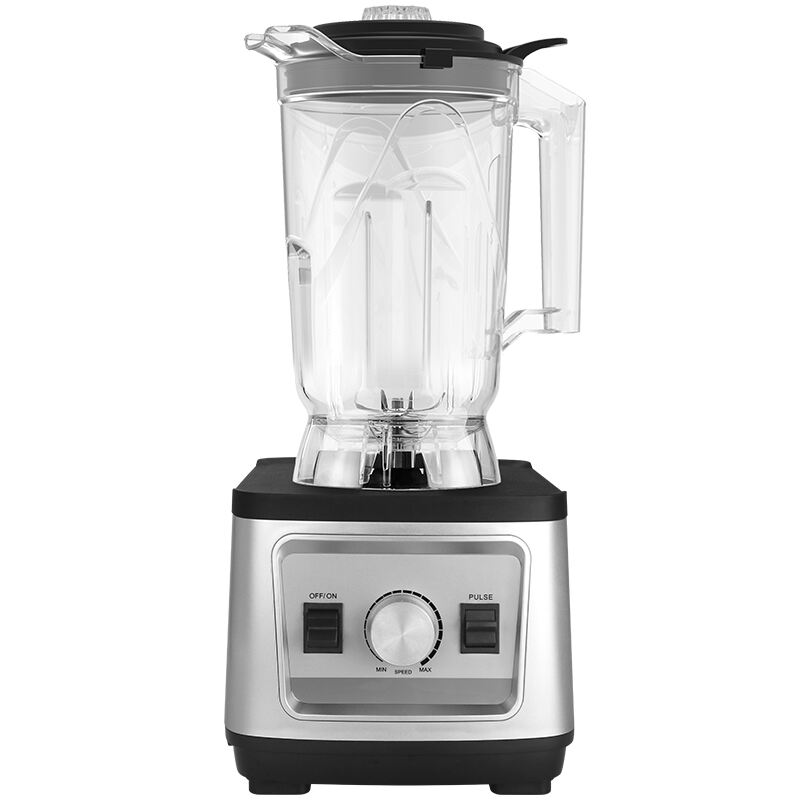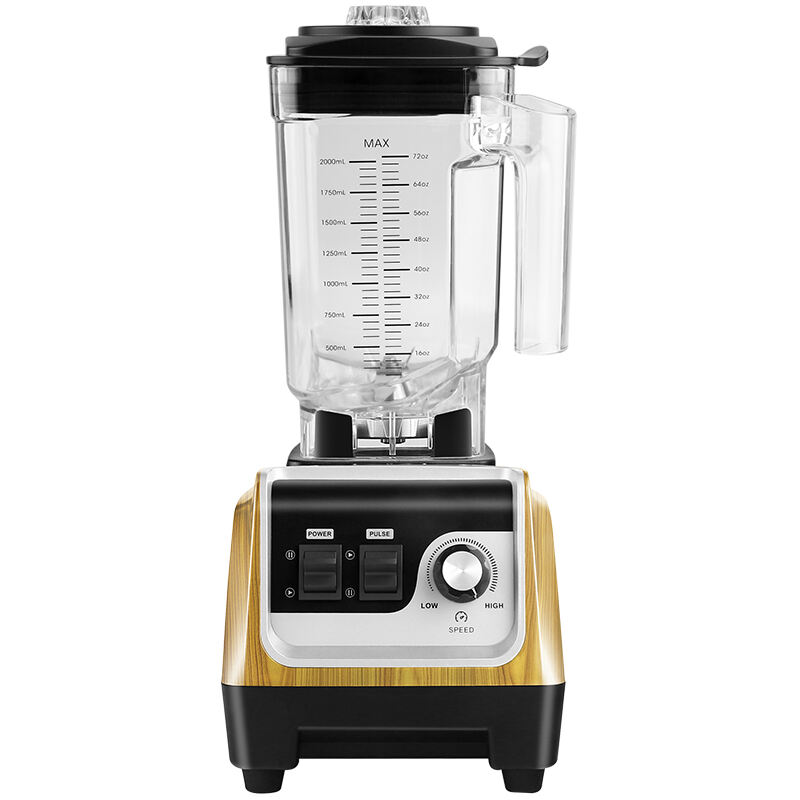Revolutionizing Professional Food Preparation with High-Performance Blending
The modern food service industry relies heavily on efficient, reliable equipment to deliver consistent quality and meet demanding customer expectations. At the heart of many restaurant and café kitchens, the commercial blender stands as an indispensable workhorse, transforming raw ingredients into culinary masterpieces. From creating silky smooth purees to crushing ice for signature beverages, these powerful machines have become essential tools for food service professionals worldwide.
Professional kitchens require equipment that can withstand constant use while maintaining optimal performance. Commercial blenders are specifically engineered to meet these demanding requirements, offering superior power, durability, and precision that sets them apart from their residential counterparts. Understanding the vast potential and diverse applications of these machines can help establishments maximize their investment and expand their menu offerings.
Essential Applications in Professional Kitchens
Crafting Signature Beverages and Smoothies
The commercial blender excels in beverage preparation, allowing establishments to create an extensive range of drinks that attract and delight customers. From protein-packed breakfast smoothies to indulgent frozen cocktails, these machines can effortlessly process frozen fruits, ice, and various ingredients to achieve the perfect consistency every time. The powerful motors and specialized blade designs ensure smooth blending without leaving behind unwanted chunks or ice particles.
Many cafés have built their reputation on signature drinks that require precise blending techniques. Whether it's creating velvety frappés, refreshing fruit smoothies, or innovative seasonal beverages, a reliable commercial blender ensures consistency and quality across hundreds of servings daily. The ability to quickly produce these popular items during peak hours can significantly impact customer satisfaction and operational efficiency.
Sauce and Soup Preparation
Professional kitchens rely on commercial blenders to create smooth, consistent sauces and soups that form the foundation of many dishes. The high-powered motors can effectively process both hot and cold ingredients, transforming roasted vegetables into creamy soups or turning fresh herbs and oils into vibrant pestos. The precision control options allow chefs to achieve their desired texture, whether it's a silky-smooth purée or a sauce with more body and texture.
Time efficiency is crucial in busy kitchen environments, and commercial blenders help streamline sauce preparation. Large-capacity containers allow for batch processing, while programmable settings ensure consistent results regardless of who operates the equipment. This reliability is especially important for signature house sauces that customers have come to know and expect.

Advanced Culinary Applications
Molecular Gastronomy and Modern Techniques
The precision and power of commercial blenders have made them essential tools in molecular gastronomy and contemporary cooking techniques. Chefs can create emulsions, foams, and other innovative textures that would be impossible to achieve with standard kitchen equipment. The ability to thoroughly blend ingredients at various speeds allows for experimentation with new recipes and presentation styles.
Modern commercial blenders often feature advanced temperature control and precise speed adjustments, enabling chefs to maintain ingredient integrity while achieving desired consistencies. This level of control is particularly important when working with delicate ingredients or creating complex molecular preparations that require specific temperatures and textures.
Dessert and Pastry Applications
Pastry chefs and dessert specialists utilize commercial blenders to create everything from smooth ganaches to perfectly crushed cookie bases for cheesecakes. The powerful motors can easily process nuts into butter, create fine powder from dehydrated fruits, or blend frozen ingredients for instant ice cream bases. The versatility of these machines has revolutionized dessert preparation in professional kitchens.
The precision control offered by commercial blenders ensures consistent results in delicate preparations like mousse, custards, and flavored creams. This reliability is crucial for maintaining quality standards in dessert programs, where texture and consistency are paramount to success.
Operational Efficiency and Maintenance
Maximizing Equipment Lifespan
Investment in a commercial blender represents a significant commitment, and proper maintenance is essential for ensuring long-term performance. Regular cleaning protocols, proper assembly, and adherence to manufacturer guidelines can significantly extend equipment life. Training staff on correct usage and maintenance procedures helps prevent unnecessary wear and potential breakdowns.
Professional kitchens should establish clear cleaning schedules and maintenance routines specific to their blender usage patterns. This might include daily deep cleaning of containers and blades, regular inspection of seals and gaskets, and scheduled professional maintenance checks to address any potential issues before they impact operations.
Optimizing Workflow and Production
Strategic placement and usage patterns of commercial blenders can significantly impact kitchen efficiency. Establishing dedicated prep stations with easy access to frequently used ingredients and implementing standardized recipes ensures consistent product quality while maximizing throughput. Many establishments benefit from having multiple blenders designated for specific applications to prevent cross-contamination and reduce cleaning time between different preparations.
Time management becomes crucial during peak service periods, and having well-maintained equipment with preset programs can help staff maintain efficiency without compromising quality. Creating detailed standard operating procedures for different blending applications helps ensure consistent results across different shifts and staff members.
Frequently Asked Questions
How does a commercial blender differ from a residential model?
Commercial blenders are built with more powerful motors, stronger components, and larger capacity containers than residential models. They are designed for continuous use throughout the day and feature advanced programming options, variable speed controls, and heavy-duty construction that can withstand the demands of professional kitchen environments.
What features should I look for when selecting a commercial blender?
Key features to consider include motor power (typically 2-3 HP or higher), container capacity, programmable settings, noise reduction capabilities, and warranty coverage. Additionally, look for models with easy-to-clean designs, durable blade assemblies, and safety features appropriate for your specific applications.
How often should commercial blenders be serviced?
Professional maintenance should be performed at least annually, with daily cleaning and weekly detailed inspections by staff. High-volume operations may require more frequent professional service. Regular maintenance helps prevent unexpected breakdowns and ensures optimal performance throughout the equipment's lifespan.
Can commercial blenders process hot ingredients safely?
Many commercial blenders are designed to handle hot ingredients, but it's essential to follow manufacturer guidelines regarding maximum temperatures and filling levels. Always use proper venting techniques and safety procedures when blending hot liquids to prevent pressure buildup and potential accidents.
 Zhongshan city HaiShang Electric Appliances Co,. Ltd
Zhongshan city HaiShang Electric Appliances Co,. Ltd



